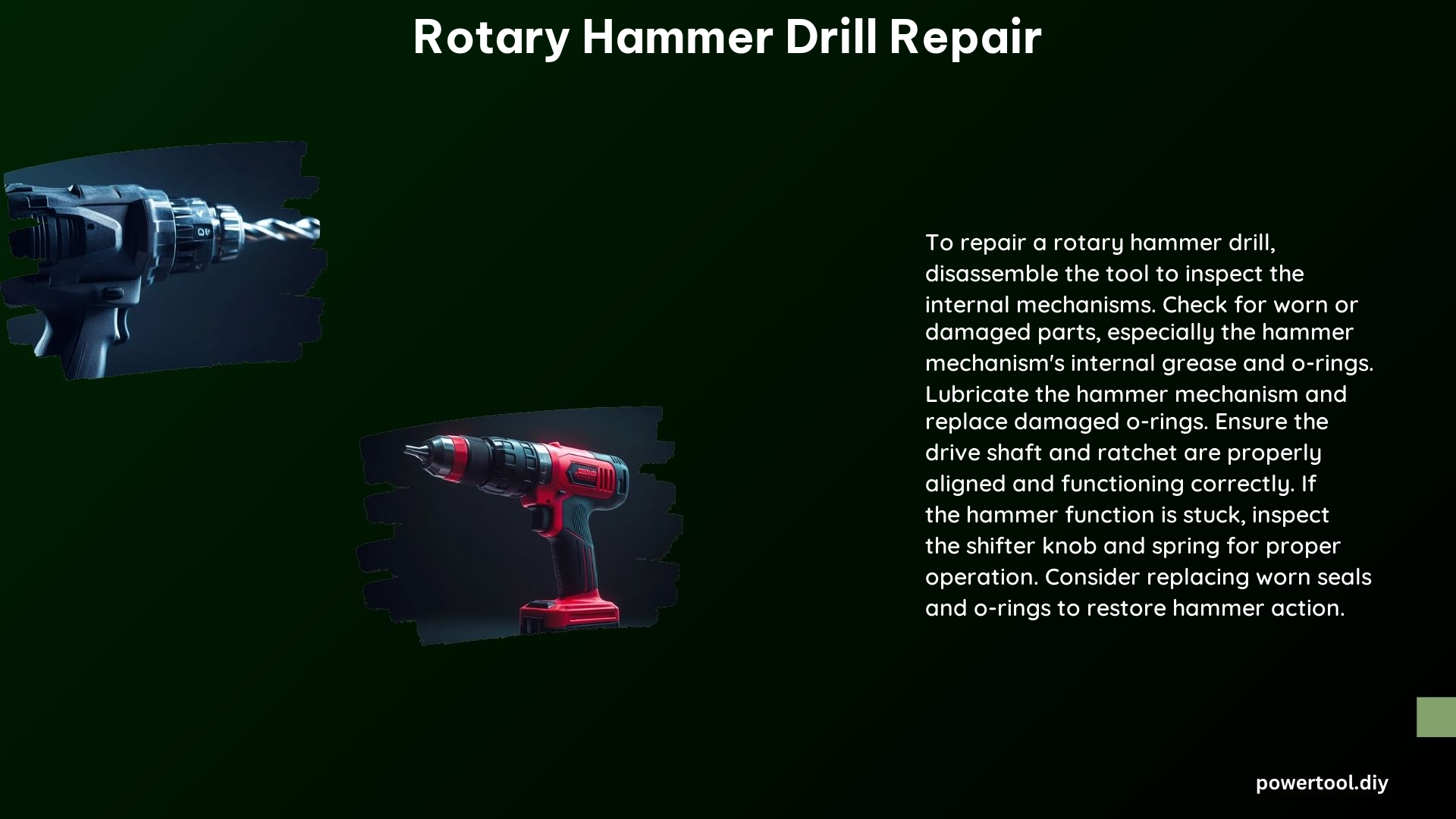Rotary hammer drills are powerful tools used for drilling through concrete, masonry, and other tough materials. However, like any power tool, they can experience various issues that can affect their performance and functionality. In this comprehensive guide, we will delve into the common problems associated with rotary hammer drills, provide detailed troubleshooting steps, and discuss essential maintenance tasks to keep your tool in top condition.
Common Issues Causing Malfunction
1. Worn or Damaged Seals and O-Rings
Over time, the seals and O-rings inside the rotary hammer drill can wear out, leading to a loss of hammer action. This can be caused by prolonged use, exposure to harsh environments, or lack of proper maintenance. Replacing these components, which typically cost between $5 to $20 each, can restore the drill’s functionality.
2. Faulty Switch or Shifter Knob
The switch or shifter knob that controls the hammer drill mode can fail, causing the drill to remain in hammer mode even when not intended. This issue can be caused by wear, damage, or a mechanical failure within the switch assembly. Inspecting and potentially replacing the switch or shifter knob, which can range from $10 to $50, can resolve the problem.
3. Collapsed or Broken Spring
The spring that applies pressure to the drive shaft can collapse or break, preventing the hammer action from engaging. This can be due to fatigue, corrosion, or excessive wear. Checking the spring and replacing it, which typically costs between $2 to $10, can fix the issue.
4. Drive Shaft Misalignment
The vertical position of the drive shaft can affect the hammer action. If the shaft is not properly aligned and engaged with the ratchet mechanism, the hammer function may not work correctly. Ensuring the shaft is properly positioned and aligned can resolve this problem.
5. Lack of Lubrication
Insufficient lubrication can cause the hammer mechanism to malfunction, leading to decreased performance or even complete failure. Regularly lubricating the internal components, using the recommended lubricants (typically costing $5 to $15 per bottle), can prevent this issue.
Troubleshooting and Fixing a Rotary Hammer Drill

1. Disassemble and Inspect
Begin by disassembling the rotary hammer drill to identify the source of the problem. Carefully inspect the internal components, looking for worn or damaged parts, misaligned components, and signs of wear on critical parts like the armature, hammer pipe, and torque limiter. This process may require specialized tools and a good understanding of the drill’s internal structure.
2. Check the Switch and Shifter Knob
Inspect the switch and shifter knob to ensure they are functioning correctly. If they are broken or malfunctioning, replace them with new components to restore proper mode selection. Replacement switches and knobs typically range from $10 to $50.
3. Lubricate the Hammer Mechanism
Apply the recommended lubricants to the internal components, especially the hammer mechanism, to ensure smooth operation. Refer to the manufacturer’s guidelines for the appropriate lubricants and application methods.
4. Replace Worn or Damaged Parts
Replace any worn or damaged parts, including seals, O-rings, and springs, to restore the drill’s functionality. Use genuine replacement parts from the manufacturer or compatible high-quality alternatives to ensure proper fit and performance.
Maintenance Tasks to Prevent Wear and Tear
1. Regular Cleaning
Clean the rotary hammer drill regularly to prevent dirt and debris from accumulating and causing wear on the internal components. Use a soft-bristled brush, compressed air, and a mild cleaning solution to remove any buildup.
2. Lubrication
Lubricate the hammer mechanism and other moving parts regularly, following the manufacturer’s recommendations. This will help reduce friction and wear, extending the life of the drill.
3. Inspect and Replace Worn Parts
Regularly inspect the rotary hammer drill for signs of wear, such as loose components, cracks, or excessive play in the mechanism. Replace any worn parts as needed to prevent more extensive damage.
4. Proper Storage
Store the rotary hammer drill in a dry, clean environment to prevent corrosion and damage. Avoid exposing the tool to moisture, extreme temperatures, or harsh conditions.
Technical Specifications for Rotary Hammer Drill Repair
Bosch GBH 5-40 DE Rotary Hammer
- Servicing kit available from Bosch, costing between €100 to €500.
- Critical components to inspect include the armature, hammer pipe, tools holder crank, and torque limiter.
Metabo BHE 6024 S-RL Rotary Hammer Drill
- Parts breakdown available, including lubrication points and O-ring replacements.
General Repair Considerations
- The age and condition of the rotary hammer drill should be considered when deciding to repair or replace the tool.
- Regular maintenance can extend the life of the drill and prevent costly repairs in the long run.
Reference Links
- https://www.youtube.com/watch?v=3F8zVDSULBs
- https://diy.stackexchange.com/questions/41020/how-can-i-repair-my-hammer-drill
- https://www.youtube.com/watch?v=FwtixqNqFds
